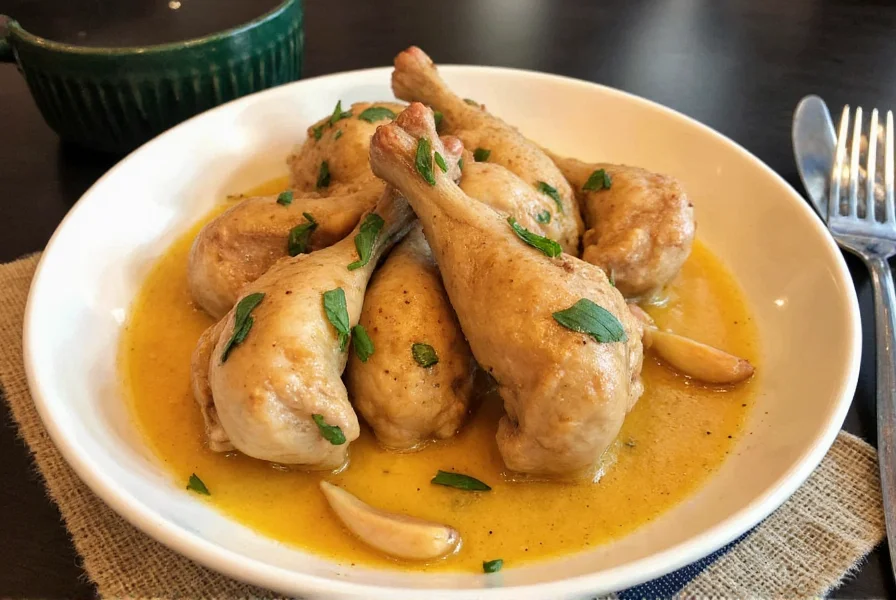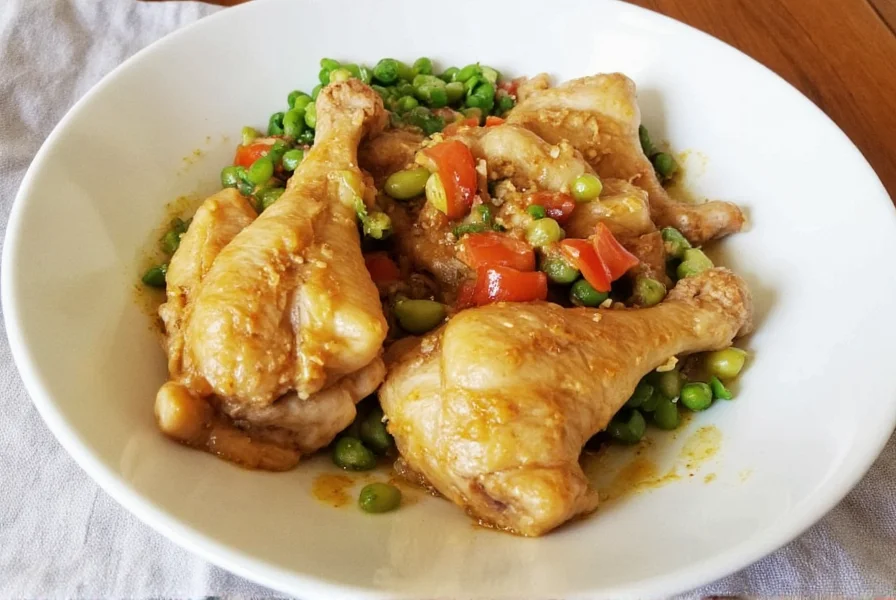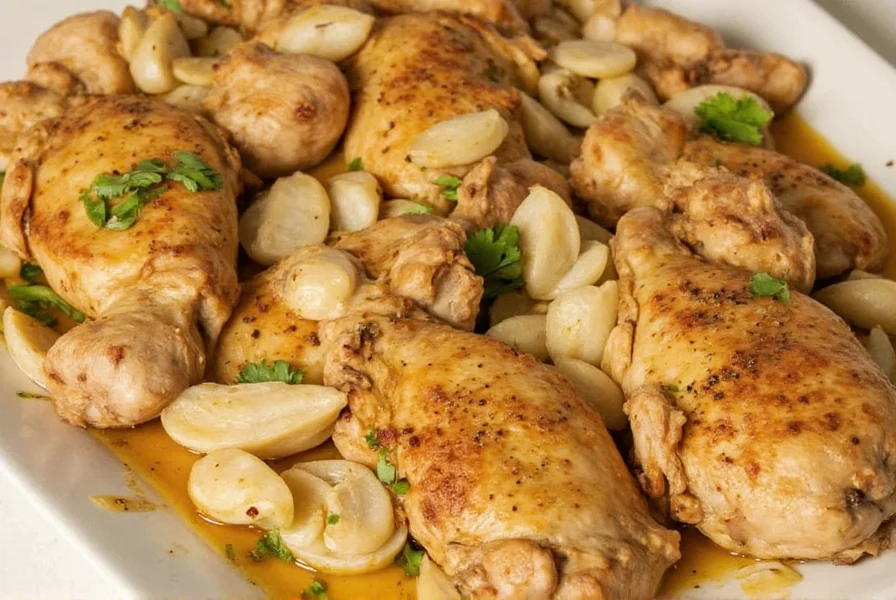Many home cooks hesitate at the thought of using forty whole garlic cloves in a single dish, assuming it would create an overpowering, harsh flavor. But this traditional French preparation method—Poulet au 40 Gousses d'ail—demonstrates how proper technique transforms garlic's character completely. The secret lies in the cooking process: whole, unpeeled cloves roast slowly alongside chicken and potatoes, allowing their natural sugars to caramelize while harsh compounds dissipate.
The History Behind the Forty Cloves
This rustic Provençal recipe originated as peasant food, making the most of readily available ingredients. Garlic grows abundantly in southern France, and using entire heads (approximately 40 cloves) was practical rather than extravagant. Historical cookbooks like those from Julia Child document this preparation as a classic coq au vin variation, where garlic replaces wine as the primary flavoring agent.
Why Forty Cloves Works Scientifically
Contrary to initial assumptions, forty whole garlic cloves create a surprisingly balanced dish for three scientific reasons:
- Allicin transformation: Raw garlic contains allicin, which creates sharp heat. When roasted slowly, allicin breaks down into mellower compounds
- Dilution effect: The cloves distribute throughout the entire dish, with each serving containing only 3-4 cloves
- Caramelization: Natural sugars in garlic develop complex sweet notes during extended cooking
| Garlic Stage | Chemical Composition | Flavor Profile |
|---|---|---|
| Raw | High allicin concentration | Sharp, pungent, burning |
| Roasted (20 min) | Moderate allicin breakdown | Strong but mellowing |
| Roasted (45+ min) | Allicin fully transformed | Sweet, nutty, buttery |
Authentic Chicken with Forty Cloves of Garlic Recipe
This preparation stays true to the French original while providing clear guidance for home cooks. The recipe serves four and requires approximately 1 hour 45 minutes total time.

Ingredients
- 1 whole chicken (3.5-4 lbs), cut into 8 pieces
- 2 heads garlic (approximately 40 whole cloves), unpeeled
- 1.5 lbs baby potatoes, halved if large
- 3 tbsp olive oil
- 1 cup chicken broth
- 3 sprigs fresh thyme
- 1 tsp salt
- ½ tsp black pepper
- 2 tbsp unsalted butter
Step-by-Step Preparation
- Prep work: Preheat oven to 400°F (200°C). Pat chicken pieces dry and season with salt and pepper.
- Sear chicken: Heat olive oil in large ovenproof skillet. Brown chicken on all sides (about 6-8 minutes total). Remove and set aside.
- Prepare garlic: Squeeze 40 unpeeled garlic cloves from their heads. Add to skillet with potatoes.
- Build dish: Return chicken to skillet, skin-side up. Add broth and thyme around chicken (not over top).
- Roast: Transfer to oven. Cook uncovered for 45-55 minutes until chicken reaches 165°F internally and potatoes are tender.
- Finish: Remove garlic skins by gently squeezing cloves from their papery coverings. Stir in butter to create glossy sauce.
Critical Success Factors for Perfect Results
Avoid these common mistakes that ruin otherwise promising attempts at this classic French dish:
- Peeling garlic before cooking: The papery skin protects cloves from burning while allowing slow transformation. Peeling first causes bitter, burnt garlic.
- High oven temperature: Cooking above 400°F creates harsh, acrid flavors. The magic happens through slow roasting.
- Overcrowding the pan: Prevents proper browning and creates steamed rather than roasted texture.
- Adding garlic midway: Whole cloves need the full cooking time to transform properly.
Recommended Variations for Dietary Needs
This adaptable recipe works well with various modifications:
- Gluten-free: Naturally compliant—no adjustments needed
- Lower fat: Remove chicken skin before cooking and use chicken breast pieces
- Vegetarian adaptation: Substitute chicken with 2 lbs mushrooms and artichoke hearts
- Extra flavor: Add lemon zest during last 15 minutes of cooking
Serving Suggestions and Pairings
Traditional French presentation enhances this dish's rustic charm:
- Serve directly from the roasting pan for authentic presentation
- Accompany with crusty baguette to soak up the garlicky pan juices
- Pair with simple green salad dressed in lemon vinaigrette
- Recommended wine: Dry rosé from Provence or light-bodied red like Beaujolais
Storage and Reheating Instructions
This dish often tastes even better the next day as flavors continue to meld:
- Refrigeration: Store in airtight container for up to 3 days
- Reheating: Warm gently in covered skillet with splash of broth over medium-low heat
- Freezing: Freeze portions for up to 2 months (thaw overnight before reheating)
- Reviving flavors: Stir in fresh parsley and a squeeze of lemon when reheating

Frequently Asked Questions
Does chicken with forty cloves of garlic actually taste overwhelmingly of garlic?
No, properly prepared chicken with forty cloves of garlic doesn't taste overwhelmingly garlicky. The slow roasting process transforms the harsh compounds in raw garlic into sweet, mellow flavors. Each serving contains only 3-4 cloves, and the final dish has a rich, complex sauce rather than sharp garlic flavor.
Can I reduce the number of garlic cloves in this recipe?
While you can reduce the garlic, the traditional preparation relies on the full quantity for proper flavor development. Using fewer cloves (below 30) prevents the necessary chemical transformation that creates the dish's signature sauce. If concerned about intensity, leave cloves unpeeled and ensure proper roasting time.
What type of chicken works best for this French garlic chicken recipe?
A whole roasting chicken cut into 8 pieces works best, with bone-in, skin-on pieces preferred. The bones add flavor to the cooking liquid, and the skin helps protect the meat during roasting. Chicken thighs and drumsticks withstand the longer cooking time better than breast pieces, which can dry out.
Why do some recipes call for 39 cloves instead of 40?
The "forty cloves" designation refers to using two standard garlic heads (each containing 18-20 cloves). Some heads contain 39 cloves total, leading to the occasional variation. The important factor is using two entire heads rather than counting individual cloves precisely.
Can I make this dish in a slow cooker instead of roasting?
While possible, slow cooking doesn't produce the same results as oven roasting. The high, dry heat of roasting creates the necessary caramelization and texture development that slow cooking cannot replicate. For best results, follow the traditional oven method at 400°F for proper flavor transformation.











 浙公网安备
33010002000092号
浙公网安备
33010002000092号 浙B2-20120091-4
浙B2-20120091-4